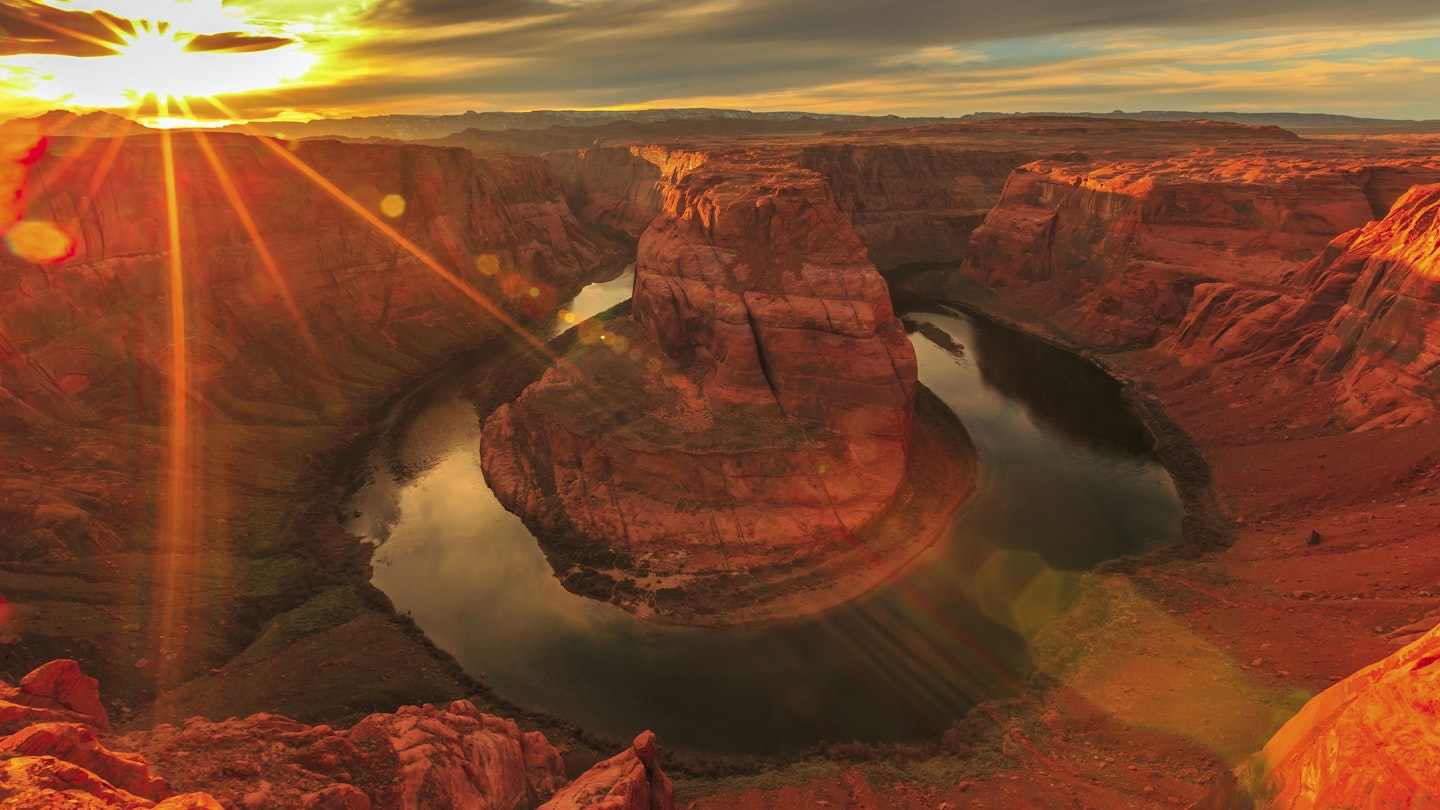Flagstaff
From Phoenix, which is roughly in the center of the state, a two-hour drive north will find you in the world’s largest ponderosa pine forest. Coconino National Forest, one of six national forests in Arizona, is a far cry from sand dunes and prickly cacti. Flagstaff, nestled amongst the pines at 7000ft elevation, serves as the gateway town for snow sports. This funky town is home to one of the state’s four universities, but is the only one that requires snow boots in the winter.

Sedona
A mere thirty minutes south of Flagstaff are the red rocks of Sedona, a mecca for art lovers and recreational enthusiasts alike. The landscape, with its boulders and bluffs, resembles a giant can of rusty red paint spilling over, giving the area a warm and peaceful glow. Mountain bikers and hikers will be thrilled by the abundance of trails available, all composed of the red clay dirt that matches the rocks. After a day outdoors, Oak Creek Village is the perfect place to shop, relax, and enjoy the sunsets that make the red rocks of Sedona glow like a fiery furnace.
Painted Desert
If you’re captivated by the Sedona landscape, head northeast to the Painted Desert, which will leave you speechless. Spanning over 160 miles, the Painted Desert gets its name from the multitude of colors ranging from shades of grey to vibrant hues of orange and pink. This terrestrial landscape could easily serve as a backdrop for a Mars movie, with its seas of hilly crevices and barren surfaces.

Monument Valley
Monument Valley is yet another one of nature’s masterpieces, featuring dramatic rock formations shaped by erosion over thousands of years. The massive spired rocks rise straight up from their domed bases, with peaks stretching toward the heavens. Artists of all types come to immortalize the unique natural landscape sculpted from the earth for all to enjoy.
Canyon De Chelly
One of Arizona’s most underrated places is Canyon De Chelly (pronounced “d-shay”). This National Monument rivals the Grand Canyon with its expansive and breathtaking views. Legendary photographer Ansel Adams spent considerable time capturing its beauty. The canyon has been home to native people for over 4000 years, and its allure continues to be enhanced over time by nature’s artistry of wind and water.

Chiricahua National Monument
Drastically different from the formations at Canyon de Chelly or Monument Valley, Chiricahua National Monument in southeastern Arizona presents an astonishing study of balance. Thin rock spires called hoodoos support large boulders that defy gravity, seemingly poised atop the spire points. Envision balancing an egg on the tip of your finger to grasp what awaits you in Chiricahua.
Glen Canyon National Recreation Area
It may surprise many visitors to learn that the second largest man-made lake in the US resides in Arizona. Lake Powell is just one of the 128 lakes in a state renowned for its desert. When the triple-digit summer temperatures arrive, Arizonans flock to the water. Glen Canyon National Recreation Area, housing Lake Powell, is the premier destination for all aquatic activities. Stretching from Lees Ferry in the Grand Canyon to the Orange Cliffs of southern Utah, Glen Canyon offers something for everyone. If swimming, boating, or fishing aren’t your preferences, the numerous back-country trails in Glen Canyon will satisfy hikers of all experiences. This area is incredibly scenic, featuring endless activities to explore.

Organ Pipe and Saguaro National Parks
Visitors can rely on an abundance of unusual cacti when exploring the desert. The most famous of these is the majestic saguaro, which only thrives in Arizona. These towering giants can reach heights of up to 40 feet, becoming a symbol of the southwest. Another remarkable species, the Organ Pipe (columnar) cactus, can grow as tall as 23 feet. Its arms extend outward and upward from the base, resembling fingers reaching away from a palm. For the best opportunities to see both species in abundance, head south to Organ Pipe and Saguaro National Parks for a unique desert experience.
Food and drink
While traveling to or from these natural marvels, consider stopping at one of the 100 wineries scattered across the state. If wine is not your preferred choice, Arizona offers over 75 craft breweries to quench your thirst in the desert. Not to be overlooked, the state has a vibrant restaurant scene, evidenced by more than 50 James Beard nominations since 2010. Exceptional food and drink, unparalleled natural beauty, and year-round outdoor weather will change your perception the next time someone mentions Arizona.





